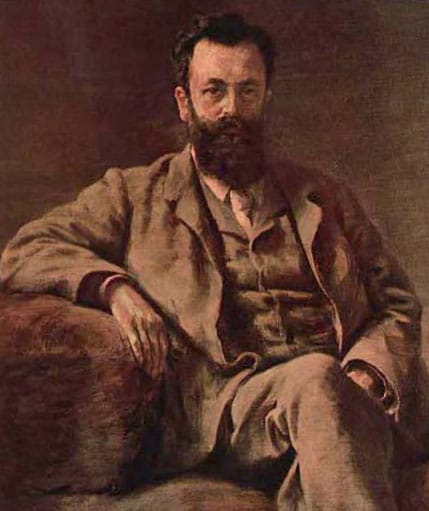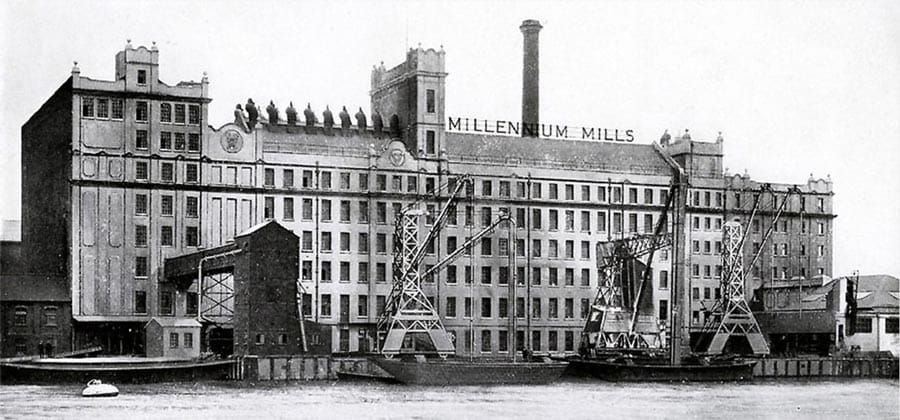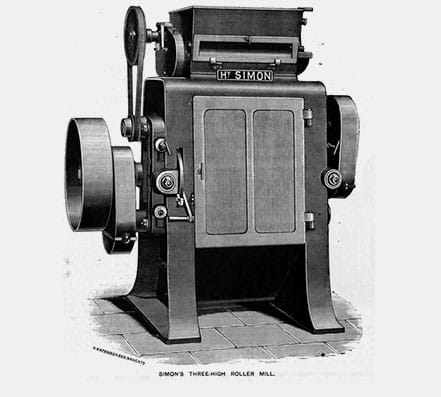
The visionary engineer that changed the World!
Henry Simon was born in Brieg, Silesia (now in Poland), on 7th June 1835, his father being a business man, a county magistrate, and a director of one of the earliest German railways, and his mother an authoress of some distinction. His uncle, Heinrich Simon, having as a leading member of the Prussian parliament taken a prominent part in the revolution of 1848, was compelled to leave Brieg, and was followed by his nephew to Zurich, where the latter attended the cantonal public school.
In 1854, at the age of nineteen, he entered the University of Breslau; and subsequently returning to Switzerland studied engineering at the Swiss Federal Technical College, Zurich, where he obtained the engineering degree in 1859. He then went to Berlin, to go through his period of military service, first in the artillery, and afterwards in the guards. On the completion of this duty, he was engaged as a draughtsman by Messrs. Rohrig, Rohrig, and Konig at Magdeburg, who were manufacturers of water motors, turbines, and machinery for sugar works.
In 1860 he came to England, and was appointed resident engineer for railway contracts in Russia by Messrs. Jametel of Manchester, for whom he spent the greater part of 1861-2 in Russia on the railway between Warsaw and Wilna, superintending the execution of various works for a distance of about 800 miles.
During 1868-4 he made business journeys in Italy and France. Coming to England again, he established himself as a consulting engineer in Manchester, where he became naturalized as a British subject. Nearly the whole of 1867 he spent in Paris in connection with the English section of the International Exhibition of that year. Subsequently he was actively engaged in the supply of locomotives, rails, wheels and axles, and other material to Austrian, Rhenish, and other continental railways. His mechanical training early led him to realize the defects of the old process of flour milling ; and he took up in its junky the plan of roller milling now adopted in nearly all civilised countries, whereby the production of flour has been cheapened and increased. Although originally no better clue was placed in his hands than a crude three-high roller-mill which performed to advantage some of the work previously done by stones, he was fully convinced thereby that the principle underlying the use of rollers would revolutionize the milling industry; and for many years almost all his energy was devoted to the development and application of this principle.
From 1879 to 1897 he took out nearly thirty patents, dealing principally with the three most important processes in flour milling, namely grinding, purifying, and dressing; and also with the method of cleaning wheat in preparation for grinding, by washing and drying it. The last constituted an epoch in flour milling, and the advantages thereby gained were equal in importance to those resulting from the substitution of rollers in place of stones. On the subject of roller milling he contributed a paper to the Institution of Civil Engineers in 1882 (Proceedings, vol. Ixx, page 191), and another to this Institution in 1889 (Proceedings, page 148).

The first complete roller-mill which he fitted up in England without the use of stones was for Mr. Arthur McDougall of Manchester in 1878, and in Ireland for Messrs. E. Shackleton and Sons of Carlow in 1879; the first automatic roller flour mill in England was for Messrs. F. A. Frost and Sons of Chester in 1881. These were soon followed by larger mills in Leeds, London, Leith, Hull, York, and elsewhere; and by the largest of all in Rio de Janeiro, which formed the special subject of his paper in 1889.

He also introduced with much success the Simon-Carves coke ovens, by which the loss of ammonia and tar by-products is saved, as well as the loss entailed in vegetation destroyed upon the land that was laid waste by the sulphurous smoke emitted from the short chimneys of the ordinary coke ovens; the plan was first carried out on a large scale in 1882 at the extensive collieries of Messrs. Pease and Partners in the county of Durham, and has since been adopted in many other places.
Other inventions which he improved and introduced into this country were the Chaudron method of sinking shafts, the Lehmann hot-air engine, and the Galland plan of pneumatic malting. He was the prime mover in the erection of the Manchester Crematorium (Proceedings 1894, page 488), of which he was the chairman; his design of the furnace there employed has since been adopted for the municipal crematorium at Shanghai, and also for that at Hull.
He was the first chairman of the Manchester Labourers' Dwellings; and more recently was one of the originators of the Manchester Pure Milk Supply.
In 1895 he endowed the Henry Simon professorship of German literature in Owens College, Manchester, besides contributing munificently to the establishment of a new laboratory there. He became a Member of this Institution in 1871, and was also a Member of the Austrian Society of Engineers and Architects, and of the French Society of Civil Engineers.
His death took place at his residence at Didsbury, Manchester, on 22nd July 1899, at the age of sixty-four.







